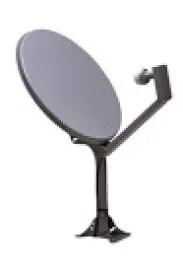Takeaway: The § 315(a)(1) bar does not apply to a complaint only alleging non-infringement, and the § 315(b) bar does not apply to a complaint filed in an administrative proceeding in front of the ITC.
In its Decision, the Board instituted review of all challenged claims (3, 4, and 6-14) of the ’121 Patent. The ’121 Patent generally relates to facilitating audio communications over computer networks.
The Board first addressed Patent Owner’s argument that the Petition is barred under both 35 U.S.C. §§ 315(a)(1) and 315(b). Section 315(a)(1) prohibits inter partes review if the petitioner or the real party in interest has filed a civil action challenging the validity of a claim of the patent prior to the date on which the petition for such review is filed. Patent Owner argued that Hulu filed a declaratory judgment action challenging the validity of the ’121 Patent by seeking to intervene in a civil action between Patent Owner and LG, Toshiba, and VIZIO, and in doing so, alleged both invalidity and non-infringement. Hulu argued that the Complaint in Intervention only alleges non-infringement, and does not include the terms “invalid” or “invalidity,” and that an action challenging non-infringement is not an action challenging the validity of the patent. Patent Owner countered by stating that Hulu’s Complaint states that “Hulu does not infringe . . . a valid claim, if any, of the ’121 Patent.” The Board agreed with Petitioner, finding that Hulu had only challenged non-infringement, not invalidity, and therefore is not barred from bringing the Petition under § 315(a)(1).
Section 315(b) prohibits the filing of a petition more than one year after the date on which the petitioner, real party in interest, or privy of the petitioner is served with a complaint alleging infringement of the patent. Patent Owner argued that Petitioner filed its Petition more than a year after Petitioner was served with a complaint filed at the U.S. International Trade Commission (“ITC”). Petitioner responded that § 315(b) only applies to service of a civil action, not to service in an ITC investigation. The Board agreed with Petitioner that § 315(b) does not apply to administrative proceeding, such as an ITC investigation. It only applies to civil actions for patent infringement.
The Board then turned to claim construction, stating that the claims of an unexpired patent are interpreted using the broadest reasonable construction standard. Patent Owner argued that the “broadest reasonable interpretation” standard should not apply here because the ’121 Patent expires on September 25, 2015, which will be before the Board would render a final written decision. The Board was not persuaded by that argument because for the purposes of this Decision, the ’121 Patent is not expired. However, the Board noted that on the date of the final written decision, it is likely that the ’121 Patent will have expired and the Board will then apply the district court claim construction standard. The Board directed the parties to address any subsequent differences of the constructions between these standards.
Next, the Board examined the terms “connected to the computer network” and “on-line status.” Petitioner contends that they mean “on-line, e.g., registered with a server” under the broadest reasonable construction standard and “registered with the server and not subsequently un-registered” under the district court standard. Patent Owner only provided a construction under the district court standard, and proposed that the term “on-line” should be defined as “in data communications, connected with another, distant computer; for example, the successful connection with a host computer in a client-server network.” The Board agreed with Petitioner that “connected to the computer network” encompasses being “on-line,” which can be done by registering an address with the server.
The Board then reviewed the terms “point-to-point communication,” “point-to-point communication link,” and “point-to-point communication connection.” Petitioner again proposed constructions under both standards, and Patent Owner did not propose a construction under either standard. The Board adopted Petitioner’s construction under a broadest reasonable interpretation standard.
The Board then addressed whether the challenged claims are obvious over WINS and NetBIOS. The Board found that the evidence set forth by Petitioner indicates there is a reasonable likelihood that Petitioner will prevail on this ground. Patent Owner argued that Petitioner had applied the incorrect claim construction, therefore, Petitioner failed to demonstrate that WINS and NetBIOS disclose the claim elements “on-line,” “connected to the computer network,” and “process.” However, as shown above, the Board adopted Petitioner’s claim construction and found that each of the prior art references discloses those limitations. Patent Owner also contended that WINS and NetBIOS fail to determine whether the first computer is actually connected to the network or on-line and fail to disclose a process running on the computer on which there is a registration system, but the Board was not persuaded by these arguments.
LG Electronics, Inc., Toshiba Corp., VIZIO, Inc., and Hulu, LLC v. Straight Path IP Group, Inc., IPR2015-00196
Paper 20: Decision on Institution of Inter Partes Review
Dated: May 15, 2015
Patent 6,131,121 C1
Before: Kalyan K. Deshpande, Trenton A. Ward, and Bart A. Gerstenblith
Written by: Desphande
Related Proceedings: Straight Path IP Group, Inc. v. Toshiba Corp., No. 1:13-cv-01071 (E.D. Va.); Straight Path IP Group, Inc. v. VIZIO, Inc., No. 1:13-cv-00934 (E.D. Va.); Certain Point-to-Point Network Commc’n Devices and Products Containing Same, Inv. No. 337-TA-892 (USITC); IPR2014-01368; IPR2013-00246; IPR2014-01366; IPR2014-01367; IPR2015-00198; IPR2015-00209



 />i
/>i

